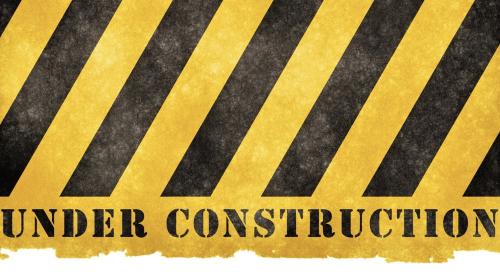I recently reached out to a group of 300-plus marketing professionals asking whether they felt their executive leadership had provided clear goals for finishing 2021 and planning for 2022. The responses piled in: “The answer changes by the day, or if I’m lucky, by the week,” “Just tell us what you want!” and “Sometimes, I feel like we’re being set up to fail,” were specific answers reflecting common themes.
I’ve felt this kind of tension building steadily since July of this year when the surge of high demand for homes at nearly any price started to return to a very healthy but normal market pace. Our collective success during the pandemic made it seem like any process, goal, or decision could be radically changed on a dime without imperiling a positive outcome.
But that assumption is incorrect, and I hope the following insights help you understand why—and how to avoid a painful lesson if leaders don’t return to establishing clear goals for their teams.
Why It’s Difficult to Define Business Success
The past 24 months haven’t been easy for those in leadership positions. The market hit a complete pause for a few weeks before roaring back to life and overwhelming the system. The availability of home sites to sell, labor to build, and materials to install became a nonstop challenge. The veracity of demand and uncertainty of supply caused prices to rise quickly, while at the same time annual sales goals were often met with six months remaining on the calendar.
Profitability was perhaps the least uncertain part of it all. As homes took longer to build, carrying costs and expenses piled up without closing revenue to offset them. With each passing week, margins eroded, and costing and purchasing teams had zero ammunition to push back.
Success can be calculated if you know the end goal.
I think it’s important to note that I understand—and have personally experienced—these challenges running the P&L for two home building divisions myself. That’s also why I feel comfortable saying, leader to leader, that this lack of clarity for your teams must come to an end.
We have to return to clear sales goals for each community and a consistent approach to pricing and releasing homes for sale. Your teams were able to pivot repeatedly during the pandemic and succeed not because they suddenly learned how to predictably accomplish the impossible, but because the market covered over all sins.
Reverse Engineering for Marketing Success
A key element of a successful marketer is the ability to reverse engineer success, which can help you accomplish any goal by breaking it into ever smaller tasks and projects to show you the predictable road map to reach your goals over time. For example, if you need to sell 20 homes in a month and assume benchmark conversions based on the builder partner average ratios of our company Do You Convert, I know you’ll need 11 of those sales to come from an online salesperson’s 55 scheduled appointments, and those appointments will be driven by 162 leads from 9,516 website visitors during the month.
In other words, success can be calculated if you know the end goal.
A key element of ensuring this approach works is to have momentum building in a consistent direction. Add elements common in today’s world, such as overnight decisions to hold sales moratoriums, the inability to sell inventory being built (and then quickly deciding to sell it all with a discount tomorrow), unstable pricing, or zero forecasting of development time lines, and it breaks down a marketer’s ability to help build that momentum. In fact, trying to build that momentum just keeps getting harder and, without a shift toward clearer goals, there’s no end in sight.
Here’s an example ripped straight from a home builder in North Carolina, who says: “I’ve been working on two large initiatives—improvements to our website and content marketing—to take a step closer to ‘buy online.’ Then today leadership says, ‘Hey, we decided to release 82 houses next week that we originally said weren’t going to release until next year. Can you run some ads to get them sold ASAP?”
In this scenario, you know the sales won’t happen as quickly or as smoothly as they could have, and other initiatives will be put on hold indefinitely while the marketer and her team scramble to respond.
RELATED
- Top Trends in Digital Sales and Marketing Strategies
- Leadership and Management—Not One and the Same
- The Supply Chain's Perfect Storm
What's Causing the Building Pressure on Marketers
There are two main causes for increased pressure on marketers in the current environment: leads can go stale at an alarmingly fast rate, and the cost of digital advertising is projected to skyrocket in 2022.
For many years I’ve used the analogy of a squirrel storing nuts for the winter to illustrate what home builders need to do during the slower months of the year. Ideally, of course, a lead would convert to a sale in 30 to 45 days, but truly, as long as we captured the lead, we could nurture it for months—or even years—until that lead would ultimately “buy or die.” The shelf life for a lead was quite long.
But since around June of 2021, leads have been going stale in as little as 90 days from initial submission. Price increases from the time the prospect becomes a lead mean the prospect can no longer qualify. The concern about long, uncertain construction time lines also results in a fear that interest rate increases will hit potential buyers before they can close ... which can push prospects back to considering existing homes.
Prospects today are also on every interest list they can find because a good consumer wants as many options as possible. That means marketers and online salespeople will have a difficult time determining if the large interest list they have is truly ready to buy or is simply holding a place in line just in case they need it.
At Do You Convert, we anticipate the cost per desired action will increase across digital channels by anywhere from 15% to 30% over the next 12 months. This activity will be driven by more companies heavily investing in digital when they have sales needs. The pandemic proved to even the biggest skeptics that digital is their most important channel for creating leads, appointments, and sales. Without a commensurate increase in budgets, this focus will result in a 15% to 30% decline in traffic from paid channels, which will in turn make each lead more valuable—if we can activate the lead before it goes stale. Hoarding leads will become intolerable both due to the cost per lead as well as potential waste if we don’t have something ready for those leads to purchase.
MORE: Top Trends in Digital Sales and Marketing Strategies
Marketing: A Wave to Nowhere?
Another favorite analogy of mine is that great marketers and leaders act like surfers who ride the waves of the market instead of constantly fighting the tide. Momentum and direction are your best traveling companions toward defined success.
However, the market we’ve come through in 2020-2021 was like an exceedingly powerful wave; it pushed with such brutal force that some builders just stopped calibrating direction at all. The rush of the wave was so exhilarating that many builders are glad to have survived—even thrived—even if it left them directionally adrift.
Now it’s time for leaders to recalibrate themselves and their teams to reorient toward defined success. I know it’s risky to create clear objectives for your teams today, but leaders need to lead, not constantly check which way the wind is blowing.













